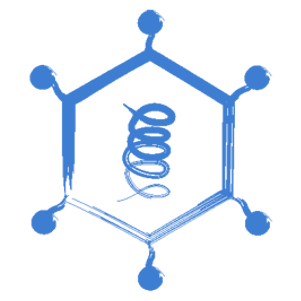|
|
| (10 intermediate revisions by 3 users not shown) |
| Line 1: |
Line 1: |
| − | ===Overview=== | + | {{frontpage |
| | + | |pagetitle =Bordetella species |
| | + | |pagebody =The ''Bordetella'' species are Gram negative rods. They are normal inhabitants of the upper respiratory tract, although can cause repsiratory diseases including rhinitis, tracheitis, bronchitis and bronchiolitis. |
| | | | |
| − | *''B. bronchiseptica'' infects a wide range of animal species worldwide
| + | |contenttitle =Content |
| − | *''B. avium'' resticted to birds
| + | |contentbody =<big><b> |
| − | *Normal inhabitants of upper respiratory tract
| + | <categorytree mode=pages>Bordetella species</categorytree> |
| − | *Cause repsiratory diseases including rhinitis, tracheitis, bronchitis and bronchiolitis
| + | </b></big> |
| − | *Exogenous or endogenous infection
| + | |logo =bugs-logo copy.png |
| − | *Poor survival in the environment
| + | }} |
| − | *Transmission between animals
| |
| − | *Young animals particularly susceptible
| |
| − | *Predisposing factors include stress and concurrent infections
| |
| − | *High morbidity; low mortality
| |
| | | | |
| | | | |
| − | ===Characteristics===
| |
| | | | |
| − | *Gram negative rods
| |
| − | *Strict aerobes
| |
| − | *Grow slowly
| |
| − | *Catalase and oxidase positive
| |
| − | *Non-lactose fermentors
| |
| − | *Grow on MacConkey agar
| |
| − | *Toxigenic strains agglutinate mammalian red blood cells
| |
| − | *Identical S form LPS in all strains of ''B. bronchiseptica'' - 1 diagnostic antigen
| |
| − | *''B. bronchiseptica'' haemolytic, whereas ''B. avium'' not
| |
| − | *Affinity for ciliated respiratory epithelium
| |
| | | | |
| − | | + | [[Category:Bacterial Organisms]] |
| − | ===Pathogenesis and pathogenicity===
| + | [[Category:Gram_negative_bacteria]] |
| − | | + | [[Category:Rods]] |
| − | *Use pathogenicity factors such as filamentous haemagglutanin (only ''B. bronchiseptica''), fimbriae and pertactin to adhere to ciliated respiratory epithelium
| |
| − | *Produce toxins:
| |
| − | **Adenylate cyclase (leucocyte toxin - kills phagocytes) (only ''B. bronchiseptica'')
| |
| − | **Tracheal cytotoxin (inhibits DNA synthesis in ciliated cells)
| |
| − | **Dermonecrotic toxin
| |
| − | *Pathogenicity factors activated by environment and genetic changes
| |
| − | *Regulatory locus, BvgAS, mediates the activation
| |
| − | *Phase variation: genetic switch of Bvg locus allows transciption of pathogenicity factors
| |
| − | *Phenotypic modulation: temperature, magnesium ions and nicotinic acid affect expression of pathogenicity factors
| |
| − | *Bvg positive allows expression of pathogenicity factors and toxins and colonisation
| |
| − | *Bvg negative may allow survival in the environment with production of flagellae
| |
| − | *Mucosal IgA prevent attachment of bacteria to cilia, but clearance from the respiratory tract may take weeks
| |
| − | *Carrier animals are a source of infection
| |
| − | | |
| − | | |
| − | ===Diagnosis===
| |
| − | | |
| − | *Samples include nasal swabs, tracheal aspirates and exudates
| |
| − | *Cultured on blood agar and MacConkey agar
| |
| − | *Biochemical profiles
| |
| − | *Slide agglutination tests for virulence of isolates
| |
| − | | |
| − | | |
| − | <big>'''''<ncl style=bullet maxdepth=2 headings=bullet headstart=2 showcats=1 showarts=1>Category:{{PAGENAME}}</ncl></big>
| |
| − | | |
| − | | |
| − | [[Category:Bacteria]][[Category:Gram_negative_bacteria]] | |
